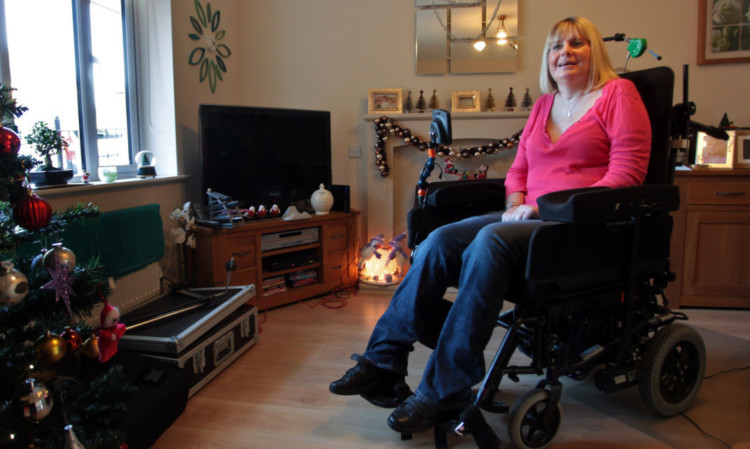
Christine can’t wait to eat her dad’s beef stroganoff again.
Britain’s longest living locked-in sufferer has cleared a major hurdle and is looking forward to her first home-cooked meal in 16 years.
Christine Waddell has been totally paralysed but fully mentally aware since suffering a huge brain stem stroke in 1997.
Like Tony Nicklinson, who battled for the right to die until his death last year, she was able to see and hear but lost any power of movement.
The only way the 42-year-old had been able to communicate was by flicking her eyes or through an eye-tracking computer to spell out words.
For years she’s been nil-by-mouth, fed liquids through a tube into her stomach. But in the last few months, she has made “massive improvements”, including a major breakthrough when she was told she was capable of eating food normally.
Christine, of Chester-le-Street, County Durham, said via a special computer programme she operates with her eyes: “I never in my wildest dreams envisaged this happening.
“Before the stroke my favourite was my dad’s beef stroganoff, so I can’t wait until I’m strong enough to sit down to a plate of that.”
Until her stroke, Christine led the life of a normal young woman.
After leaving school at 16, she started a job as a data input clerk, passed her driving test the following year and enjoyed socialising at weekends.
But she became ill, experiencing extreme tiredness, shortly after buying her own flat in 1995. Her doctor diagnosed ME.
Two years later Christine collapsed, spending three days on the floor of her bathroom until her dad Colin broke into her house to rescue her.
Christine said: “I was taken to hospital where, after about a week of tests, they diagnosed a brain stem stroke, which had caused locked-in syndrome.
“If I survived, which was unlikely, I would probably never walk, talk or move again.”
Christine was discharged after 17 months, only able to move her head from side to side. She was given an electric wheelchair, the computer which she could “speak” through by moving her eyes, and another to control her TV and room lights.
But eight years later she felt a tiny amount of movement in her left big toe. She had also had some movement in her left thumb and the rest of the toes on her left foot.
“At first I thought I was seeing things,” she said, “so I had to call the carer to confirm it. Then I called all my family up to see it. I’ve never been so happy.”
Last year, her carer discovered an online video of Yorkshire mum-of-three Kate Allatt, one of the few people ever to recover from locked-in syndrome.
During an hour-long conversation via the internet, Kate extolled the virtues of neuro-physiotherapy.
Christine said: “She was really positive and urged me to fight to get neuro-physio but the prices were extortionate. After several weeks, a letter arrived from my GP saying the funding bid had been accepted.
“The carer and I were so happy we were near to tears.”
Tragically, her mum Beryl had died a few weeks earlier, after succumbing to motor neurone disease.
Christine said: “I made a promise that I was going to recover for her, and this was my chance to do just that.”
Now Christine can sit for 40 minutes unaided on her bed and can move her torso. She has experienced tiny flickers of movement “just about everywhere” and last week managed to stand while supported by her physiotherapist.
And there’s nothing she likes more than a twice-weekly shot of vodka down her feeding tube “full impact in double quick time,” she said.
Last week, Mr Nicklinson’s widow launched a legal challenge in the UK Supreme Court to overturn euthanasia laws, to allow assisted suicide for people incapable of taking their own lives.
Christine said: “Able bodied people can commit suicide so why can’t severely disabled people? They have just as much right as anyone else.
“However, I’ve felt all along that I do have the potential to recover. I’m just so amazed that it’s happening.”

Enjoy the convenience of having The Sunday Post delivered as a digital ePaper straight to your smartphone, tablet or computer.
Subscribe for only £5.49 a month and enjoy all the benefits of the printed paper as a digital replica.
Subscribe